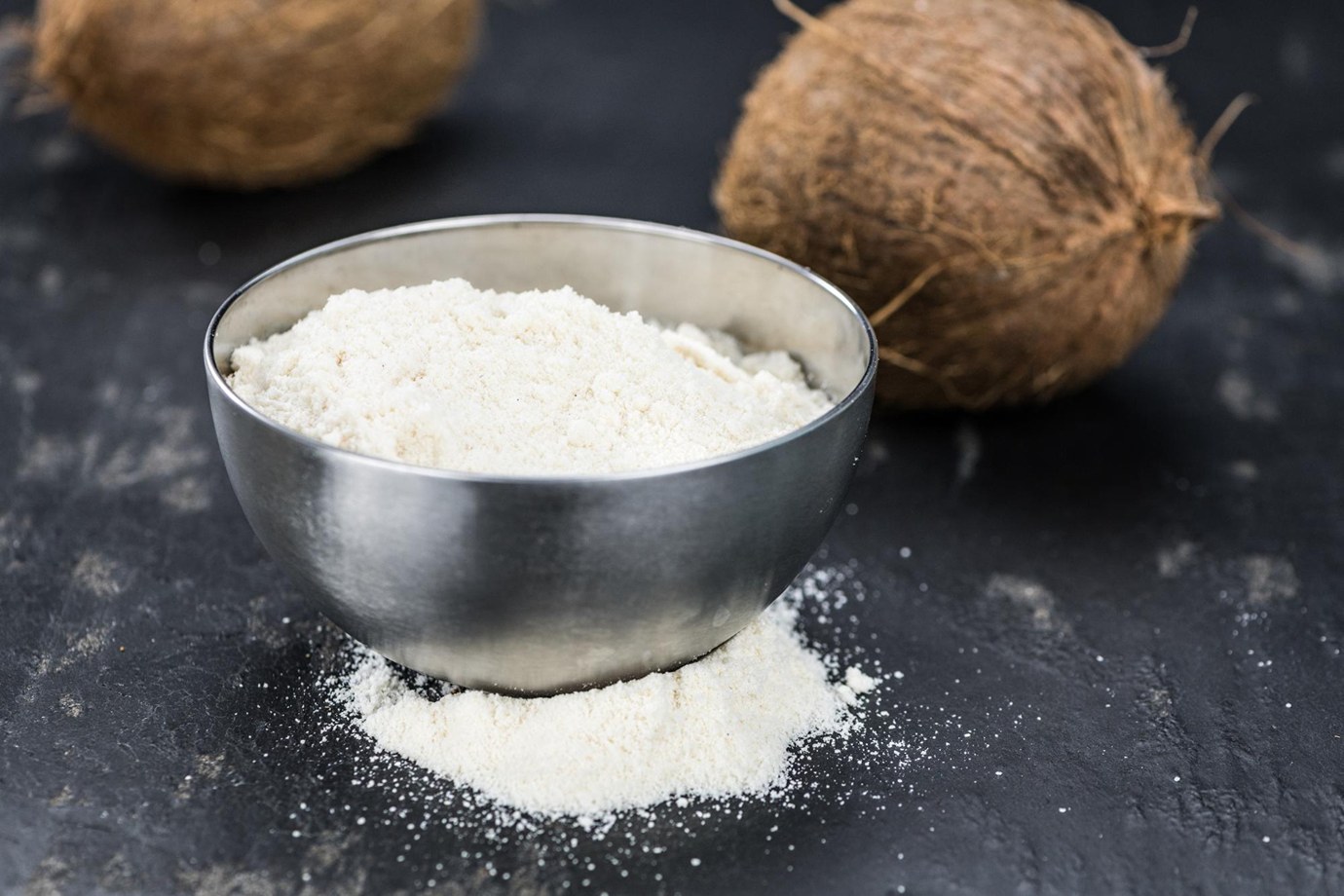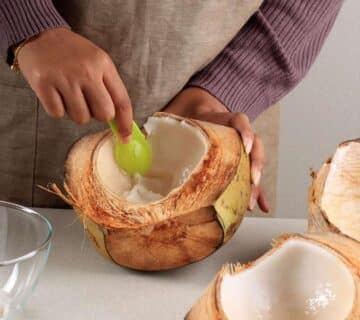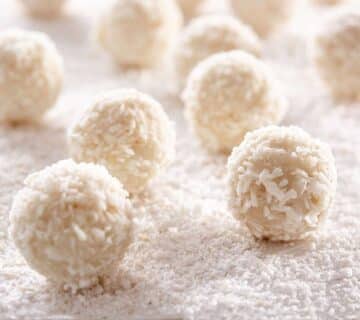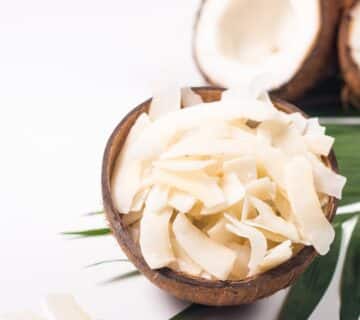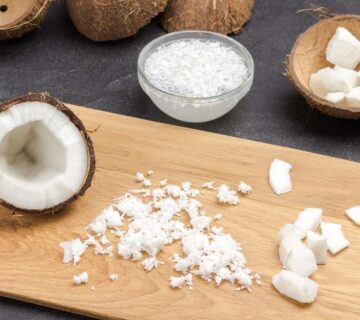Up until now, our understanding of flour has largely revolved around wheat, corn, and rice. However, there’s a surprising addition to the list: coconut flour! This unique flour has been making waves as a gluten-free option, celebrated for its nutritional richness and adaptability in culinary endeavors, both in cooking and baking.
But did you know that you can easily make coconut flour at home from desiccated coconut? In this comprehensive guide, we’ll explore the process of making coconut flour from desiccated coconut, various methods of preparation, the differences between it with other flours, and the diverse uses of coconut flour in culinary applications.
How to Make Coconut Flour From Desiccated Coconut
Making coconut flour is very simple and can be done by anyone. The materials and equipment used are also easy to get. The ingredients only need to use desiccated coconut as the main ingredient without any mixture. Here’s the explanation:
a. Ingredients
- Desiccated coconut
b. Equipments
- Blender
- Oven
c. Instructions
- Preheat your oven to 250°F (120°C).
- Spread the desiccated coconut evenly on a baking sheet lined with parchment paper.
- Place the baking sheet in the preheated oven and bake the desiccated coconut for about 10-15 minutes, stirring occasionally, until it turns golden brown and fragrant.
- Remove the toasted desiccated coconut from the oven and let it cool completely.
- Once cooled, transfer the toasted desiccated coconut to a food processor or high-speed blender.
- Process the toasted coconut in short bursts until it reaches a fine, powdery consistency, resembling flour.
- Store the homemade coconut flour in an airtight container in a cool, dry place for future use.
How Coconut Flour Is Made?
There are 2 methods that can be applied to make coconut flour. Actually, these two methods only differ in the equipment used to dry the desiccated coconut. Here’s a further explanation of the 2 methods:
1. Stovetop Method
- Toast the desiccated coconut in a dry skillet over medium heat, stirring constantly, until golden brown.
- Transfer the toasted coconut to a food processor or blender and process until finely ground.
2. Dehydrator Method
- Spread the desiccated coconut evenly on a dehydrator tray and dehydrate at 115°F (46°C) for 4-6 hours, or until completely dry.
- Once dried, blend the coconut in a food processor or blender until it becomes a fine powder.
Difference Between Coconut Flour and Other Flours
Coconut flour differs from traditional wheat flour and other grain-based flours. Because it is made from different raw materials, of course, the content is also different from other flours. Other flours have ingredients that coconut flour does not, such as high MCT content and vice versa. Here are some differences:
A. Gluten-Free
Coconut flour is naturally gluten-free and it is suitable for individuals with celiac disease or gluten intolerance.
B. High in Fiber
This type of flour is rich in dietary fiber, which helps promote digestive health and regulate blood sugar levels.
C. Low in Carbohydrates
Compared to wheat flour and other grain-based flours, coconut flour is lower in carbohydrates. It is a suitable option for those following low-carb or ketogenic diets.
D. High in Healthy Fats
It contains healthy fats, particularly medium-chain triglycerides (MCTs), which have been linked to various health benefits, including improved heart health and weight management.
Several Uses of Coconut Flour
You might have a question like, “can coconut flour be used like any other flour?” The answer is of course yes! You can use this coconut flour to make cakes, breads, and desserts just like regular flour. Here’s a further explanation:
1. Baking
Coconut flour can be used in baking recipes to add moisture, texture, and flavor. It is commonly used in gluten-free baked goods such as bread, muffins, pancakes, and cookies.
2. Thickening Agent
It also can be used as a thickening agent in soups, sauces, and gravies, providing a gluten-free alternative to traditional flour-based thickeners like wheat flour or cornstarch.
3. Breading and Coating
You can also use it as a gluten-free alternative to breadcrumbs for breading and coating foods such as chicken, fish, and vegetables before frying or baking.
4. Smoothies and Shakes
Adding a tablespoon of coconut flour to smoothies and shakes can enhance their nutritional content and provide a subtle coconut flavor.
5. Desserts
Additionally, you can always make delicious desserts such as cakes, brownies, and pies, providing a gluten-free and nutritious option for those with dietary restrictions with it too.
Coconut Flour is a New Innovation for the Food Industry!
Coconut flour is a valuable ingredient that adds a unique touch to any dish. If you’re considering incorporating coconut flour into your culinary experiences, Sari Coconut is an excellent choice.
With its commitment to quality, sustainability, and purity, Sari Coconut offers a premium selection of coconut derivatives that guarantees exceptional taste and texture in your recipes.
Additionally, Sari Coconut is a certified Supplier of Coconut Derivatives Products from Indonesia and businesses can confidently incorporate this versatile ingredient into their products. Their products ranging from desiccated coconut powder, RBD coconut oil, coconut sugar, coconut fiber and many more.
Elevate your cooking and baking experiences with the natural goodness of coconut products from Sari Coconut today!
FAQ
1. Is coconut flour the same as desiccated coconut?
No, coconut flour is made from ground coconut meat that has been dried and defatted, whereas desiccated coconut is simply shredded or flaked coconut meat that has been dried.
2. Can I substitute coconut flour for other flours in recipes?
Coconut flour is highly absorbent and behaves differently than other flours, so it cannot be directly substituted in recipes without making adjustments to the quantities of other ingredients and the liquid content.
3. How is coconut flour made?
Coconut flour is made by grinding dried coconut meat into a fine powder. The oil is typically extracted from the coconut meat before it is dried and ground.
4. Is coconut flour gluten-free?
Yes, it is naturally gluten-free, making it suitable for people with celiac disease or gluten intolerance.
5. What are the nutritional benefits of coconut flour?
It is high in fiber, protein, and healthy fats. It also contains essential nutrients such as iron, potassium, and manganese.

